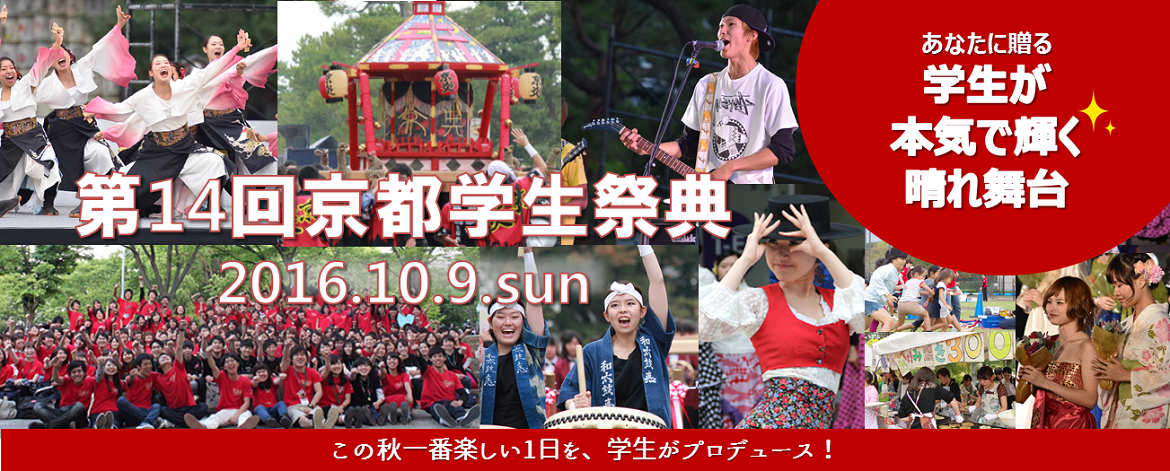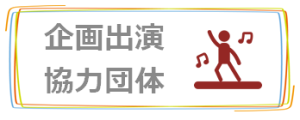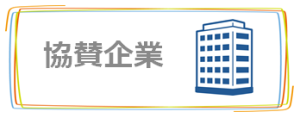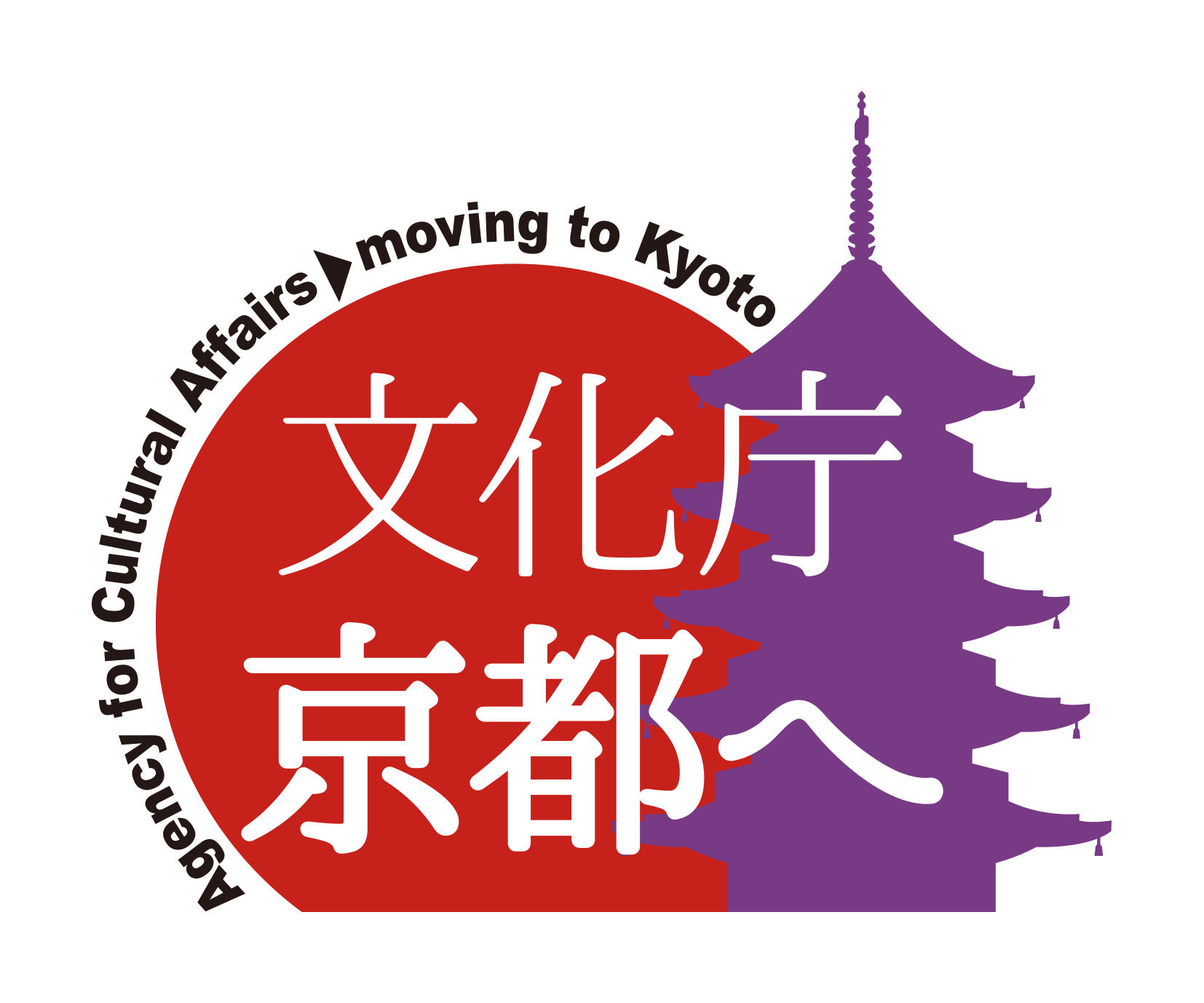- Outline of the event
- Implementation plan
- Year-round activities other than the main festival
- Student Support
- Implementation Report
- Inquiries
Outline of the event
- ■The 14th Kyoto Student Festival Theme
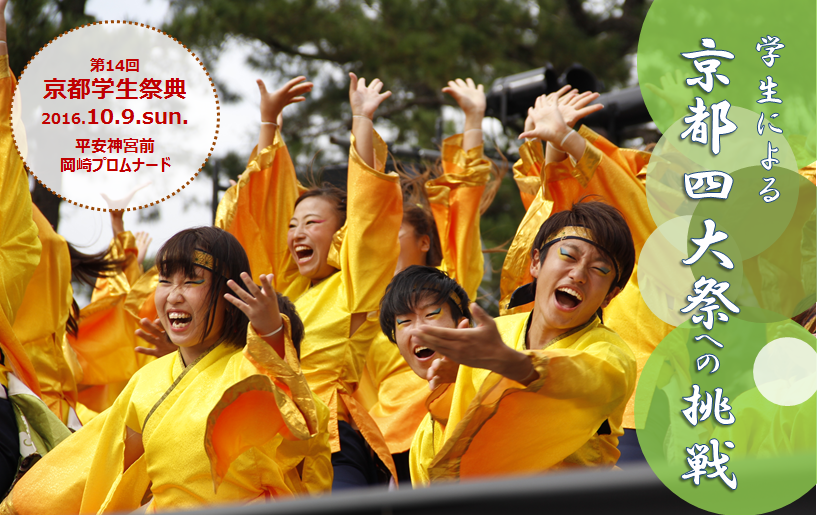
- ■ Thoughts on the theme
By involving people all over Kyoto, we will create places and opportunities where students from all over Kyoto can “fully demonstrate their abilities,” which was the impetus for the establishment of the Kyoto Student Festival, and by realizing a festival in which students from a wider variety of genres can participate proactively, we will take on the challenge of adding “student-likeness” to Kyoto’s festival culture and becoming the “Four Great Festivals of Kyoto” on a par with the three major festivals in Kyoto.
The 14th Kyoto Student Festival
The 14th Kyoto Student Festival was planned with the aim of providing as many students as possible with a place and opportunity to “fully demonstrate the potential of students,” which is the activity philosophy of the Kyoto Student Festival. In particular, this year’s festival aims to realize a “festival in which people can participate proactively” by inviting more students from various fields, including artistic fields such as fashion and art, who have not participated in the festival so far, to participate in the festival, and to contribute to the revitalization of the community by disseminating it as an attraction of Kyoto. By expanding the range of genres in this way, we planned the project with the goal of creating a unique student culture for the festival while increasing the number of collaborators, and eventually becoming the “Four Great Festivals of Kyoto” on a par with the three major festivals in Kyoto.
|
Date |
Sunday, October 9, 2016, 11:00-19:00 |
|
Venue |
Heian Jingumae Okazaki Promenade (Sakyo-ku, Kyoto) |
|
Organizer |
|
|
Co-organizers |
Kyoto Student Festival Organizing Committee (Kyoto Prefecture / Kyoto City / Kyoto Chamber of Commerce and Industry / Kyoto Association of Corporate Executives / University Consortium Kyoto) |
|
Special Cooperation |
Heian Shrine |
Implementation plan
▼Click here for details▼
brochure
You can download it here.
Festival-planned appearances, cooperating organizations, and sponsoring companies
Year-round activities other than the main festival
The Kyoto Student Festival aims to be a “festival” that is loved by the community and rooted in the community, and conducts daily exchange activities throughout the year together with the local community.
In fiscal 2016, in addition to our previous activities, we held a large-scale pre-event titled “Regional Revitalization Project” and took on various challenges to realize the purpose of the Kyoto Student Festival.
1. Regional Revitalization Projects
May 21, 2016 [Kyoto Student Festival Pre-Event in Fushimi]
July 9, 2016 [Kyoto Student Festival Pre-Event in Demachi Yanagi]
2. FY2016 Tohoku Reconstruction Support Project
3. International Exchange Activities
4. Activities to disseminate “Kyo Flame Sodefure!”
5. Main Visual Competition
Continuing from the 2015 academic year, we received a large number of applications from students from all over the country in the open call for the main visual Mr./Ms. The works selected for the Grand Prize were published in various public relations media throughout the year.
6. Community Exchange Activities
- Nighttime patrols to protect the safety of the community (twice a month) Kyoto Okazaki and Anning area
- Cleanup activities aimed at beautifying the area (about once a month) Kyoto Okazaki, Anning, Umeya, Sanjo area, Kamogawa
- Uchimizu activities to address local environmental problems (summer) Kyoto Okazaki, Anning, Ume, Sanjo, Fushimi area
- Participation in local festivals (summer) Kyoto Okazaki, Anne, Umeya, Sanjo, Shichiku area

Student Support
Student Growth Programs
The University Consortium Kyoto supports students’ daily activities based on the principle of “creating their own initiative,” and hopes that “interaction” and “experience” with a wide variety of people in contact through independent activities will lead to new “awareness” and “learning” that will lead to student growth.
Specifically, we have adopted the PDCA cycle method, which emphasizes the activities of students as a single project, working together as a team toward a single goal, and achieving results as a team. With the goal of smooth execution of activities, improvement of projects, and continuous development of businesses, we are working to create a system that promotes the growth of students by promoting the following support methods.
PDCA Cycle at the Kyoto Student Festival
- Planning period (November ~ May): Information gathering, awareness, planning
- Trial period (May ~ September): Implementation of pre-project (medium-scale project imitating the main festival)
- Verification period (June ~ August): Mid-term review meeting
- Implementation period (October): Implementation of this project
- Dissemination of results (around October ~ November): Implementation of post-mortem review meetings and results debriefing sessions
・Verification period “Interim review meeting”
| Date: | Thursday, June 16, 2016, 18:30-21:00 |
| Location: | Campus Plaza Kyoto |
| Lecturer: | Masami Mori (Professor, Faculty of Social Sciences, Kyoto Bunkyo University) |
| Number of participants: | 92 members |
| ContentsLooking | back after the first pre-event, and then checking the progress of the team and the entire team for the second phase and the main festival in October, we created an opportunity to reflect once again on whether we have lost sight of our own goals and directions, and provided an opportunity to reaffirm the need for team collaboration through sharing within the department and group presentations. |
・Dissemination of results “Post-mortem review meeting”
| Date: | Sunday, October 30, 2016, 18:30-21:20 |
| Location: | Campus Plaza Kyoto |
| Lecturer: | Masami Mori (Professor, Faculty of Social Sciences, Kyoto Bunkyo University) |
| Number of participants: | 135 members |
| ContentsAt | the end of the festival, each member of the organizing committee was given an opportunity to verbalize and reflect on the meaning of the activities and initiatives at the Kyoto Student Festival, what they learned from them, and how to apply them to the next stage through group work, etc., and to connect their activities to their future confidence. |
・Dissemination of results “Achievement debriefing meeting”
| Date: | Sunday, November 13, 2016, 16:30-17:30 |
| Location: | Campus Plaza Kyoto |
| substance | We reported on the outline of our annual activities and the results of the Kyoto Student Festival as an organization to stakeholders and other stakeholders, and presented challenges and prospects for the future. Presentation items (1) Activity overview report (2) Increase in the number of partners (3) Creation of opportunities for students to shine (4) Summary and outlook *Presentation points: Concept, goals, outline, results, and lessons learned (based on the purpose of the activities of the Kyoto Student Festival) |
Survey of students’ growth for executive committee members
In fiscal 2015, the Foundation conducted a survey on the growth of executive committee members in the activities of the executive committee of the Kyoto Student Festival. The activities of the Executive Committee are unique in that they are extracurricular activities conducted in collaboration with society at Intercollegiate. We investigated how growth is achieved through this activity using the following three methods, and analyzed them quantitatively, qualitatively, subjectively, and objectively.
■ Methods
(1) PROG test that can objectively measure generic skills
(2) Rubric-style questionnaire that allows you to check your own ability index by level
(3) Interviews with more than 20 executive committee members
Results
■Click here for □ survey report□
Implementation Report
The Kyoto Student Festival was held in 2003 to enliven the “University City of Kyoto,” and this year marks the 14th anniversary. In addition to planning and managing the day of the festival to be held in October, the Kyoto Student Festival Executive Committee, which is made up of students, has been working tirelessly in recent years to deepen community exchanges throughout the year, and in 2016, we also carried out activities rooted in the local community in order to realize the proposals that were solicited from the public in the “Regional Revitalization Project.” As the culmination of these efforts, the 14th Kyoto Student Festival was planned and operated with the aim of providing as many students as possible with a place where they can “fully demonstrate their abilities” with the keyword of “student-ness” under the annual theme of the Executive Committee, “Challenge of Kyoto’s Four Great Festivals by Students.” In the various projects of the festival, while the students’ unique ideas, youth, and power were brought out, it was characteristic that performances by art students, who had not participated in the festival until now, were incorporated in their specialized fields that they are studying on a daily basis. In addition, the stage production using projection mapping at the fashion contest and the Grand Finale seems to have helped to dispel the image of the festival as an equal “odori no matsuri” by involving genres that had never existed before.
The Foundation, which plays a role in the Kyoto Student Festival Organizing Committee, in addition to providing support for the festival, sees the year-long activities as opportunities for student growth and develops a support system throughout the year. This year, in particular, it was a large-scale activity, such as holding two pre-events (in the Fushimi and Demachiyanagi areas), but in the visitor survey, it was found that there were some parts that did not directly attract customers. However, it has been confirmed that the experience of the pre-event led to the students’ confidence and learning, and it has been confirmed that the growth experience has been of a certain value as a result of the activity. As the next fiscal year marks the 15th anniversary, we will continue to assess the capabilities and potential of the Executive Committee (especially the students who serve as executive staff) and develop a system to support the Executive Committee. We would like to express our gratitude to everyone who came to the event and to all those who supported us in various ways in holding this project.

Achievements, etc.
Number of visitors and collaborators (*According to the Executive Committee)
| Event | schedule, number | of people, and | linkage |
| Regional Revitalization Project Part 1 “Pre-Event in Fushimi“ |
Saturday, May 21, 2016: | 16,858 people | 32 organizations |
| Regional Revitalization Project Part 2 “Pre-Event in Demachi Yanagi” |
Saturday, July 9, 2016: | 3,330 people | 45 organizations |
| The 14th Kyoto Student Festival |
Sunday, October 9, 2016: | 127,000 |
236 organizations * Number of groups that will appear in the project |
Number of Participating Students

| Executive Committee | 233 members / 23 universities (including 1 non-member university) |
| Short-term volunteer staff | 226 (including 32 from 17 non-member universities and 3 vocational schools) |
| International Student Executive Committee | 8 (China, Taiwan, UK, Vietnam, Singapore, Indonesia) |
| student | MCs / Kyoto, Osaka, Hyogo |
| 956 people / 23 universities and 1 junior college | |
| Total | 1,436 |
Inquiries
University Consortium Kyoto, Kyoto Student Festival
TEL 075-353-9189 FAX 075-353-9101
〒600-8216 Shimogyo-ku, Kyoto-shi, Nishitoin-dori, Shiokoji, Shimo-ku, Kyoto, Campus Plaza Kyoto
* Reception hours: Tuesday ~ Saturday 9:00 ~ 17:00 (excluding year-end and New Year holidays)














